Walking into the house of Otgonkhuu on a particularly windy winter afternoon, you immediately feel the comfort of home. It’s warm and cozy. A pot of tea is boiling. Diplomas, trophies, family photos, and assorted knickknacks hang on the living room walls. A piano sits in the corner, beside a room filled with musical instruments.
But Otgonkhuu’s house still lacks some of the crucial creature comforts many take for granted: central heating, hot water from tap, and a flush toilet.
“I live here with my wife and my youngest son. My other three children have moved out. I have been living here since 1987. Back then, Bayankhoshuu was considered an outpost of Ulaanbaatar,” says 55-year old Otgonkhuu.
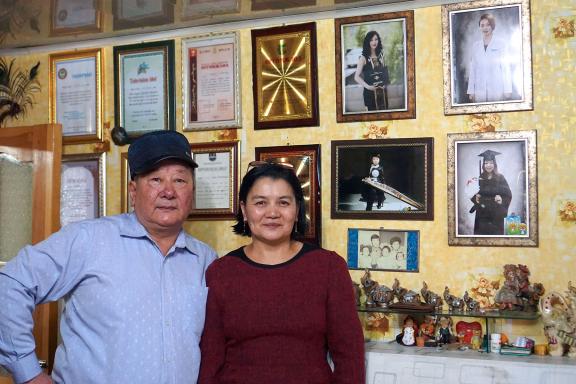
Otgonkhuu and his wife, Otgonbayar, are proud of the accomplishments of their children. Photo: GCF/Angeli Mendoza
Today, Bayankhoshuu is one of the oldest peri-urban ger residential areas in Ulaanbaatar. The peri-urban ger areas of the capital is home to 840,000 Mongolians, roughly about 60 percent of the city’s population.
“There weren’t that many people living here 30 years ago. This ger district was also not as big,” he notes. “And since there weren’t that many people, the air was clear and not polluted. It was nice back then. Now it’s highly populated and the air and soil pollution are getting worse.”
Ger areas, which are settlements of low- and medium-income families, have poor infrastructure. They are not connected to the city’s heating system and water and wastewater networks. As a result, residents burn coal to keep their homes warm particularly during harsh winter nights. The open pit latrines in their backyards create severe soil pollution especially when temperatures rise.
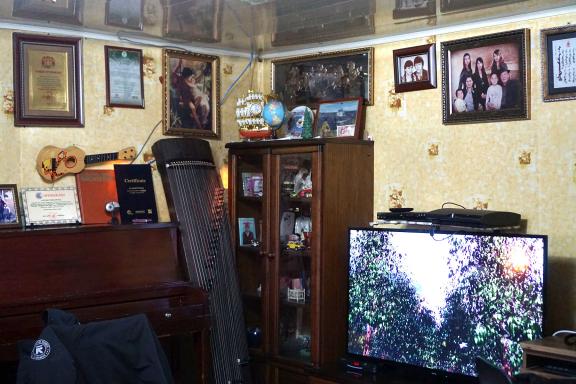
Their youngest son is a pianist and won a piano competition in the United States. Photo: GCF/Angeli Mendoza
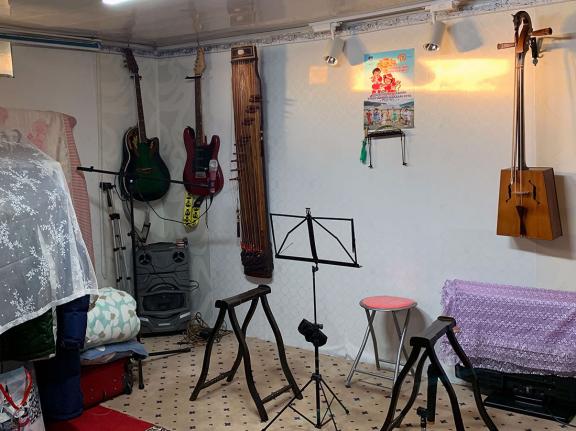
The room adjacent to the living room is filled with various musical instruments. Photo: GCF/Angeli Mendoza
“You should come back here at night. When smoke is coming out of all the chimneys of the houses, you won’t see anything,” Oggie Zorigoo, who works for the Ger Area Development Investment Project, tells me.
It is true. The furnace which kept Otgonkhuu’s house toasty was fueled by coal briquettes.
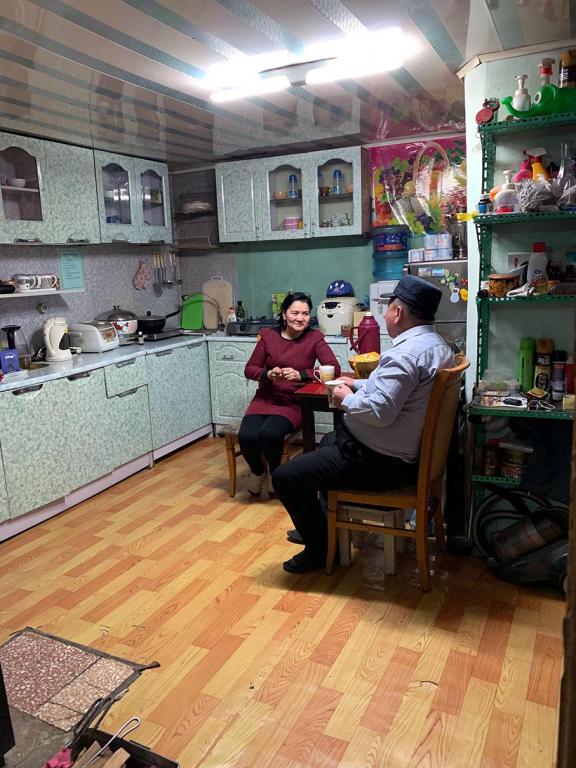
Otgonkhuu and Otgonbayar enjoying a hot cup of tea in their kitchen. Photo: GCF/Angeli Mendoza
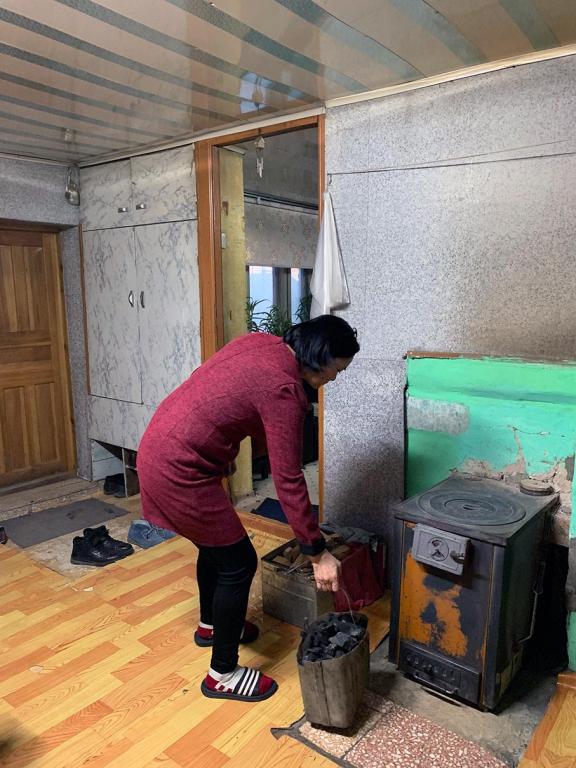
Women in the family are traditionally responsible for keeping the house warm during winter. Here, Otgonbayar, gets ready to put coal briquettes in the furnace. Photo: GCF/Angeli Mendoza
Transforming Ger Districts
An ongoing Asian Development Bank (ADB) project is supporting the Ulaanbaatar City Master Plan by laying priority infrastructure such as water and sewerage pipeline that will upgrade the ger areas into a network of liveable subcenters. These subcenters are envisioned to provide economic opportunities and urban services that lead to a healthier urban environment.
Building on this, the Green Climate Fund (GCF) is helping Ulaanbaatar city shift to a low-emission, climate-resilient development path. GCF is investing US$145 million in a US$544 million project with ADB for the construction of green affordable housing in the ger areas of Ulaanbaatar, Bayankhoshuu included. 10,000 green housing units will be fitted with photo voltaic panels and will be built with a high efficiency isolation system.
The residents of Bayankhoshuu will have to give up their current houses to pave the way for the construction of the low-rise apartment units. Consultations with the communities have been going on for many years in order to ensure their acceptance of the project which will be implemented later this year.
“I’m supporting this project because I want to improve my living condition. As a citizen of Mongolia, it’s my duty to participate so that all Mongolians could live in a better environment,” says Otgonkhuu.
“Living in an apartment will mean there will be fewer gers. I know that it will take time to move into these apartments, but if the project can be accomplished, it will be very effective in solving the air and soil pollution problem. Also, the biggest change for me will be having clean hot tap water and drainage. My biggest goal is for my children to live well.”
By Angeli Mendoza